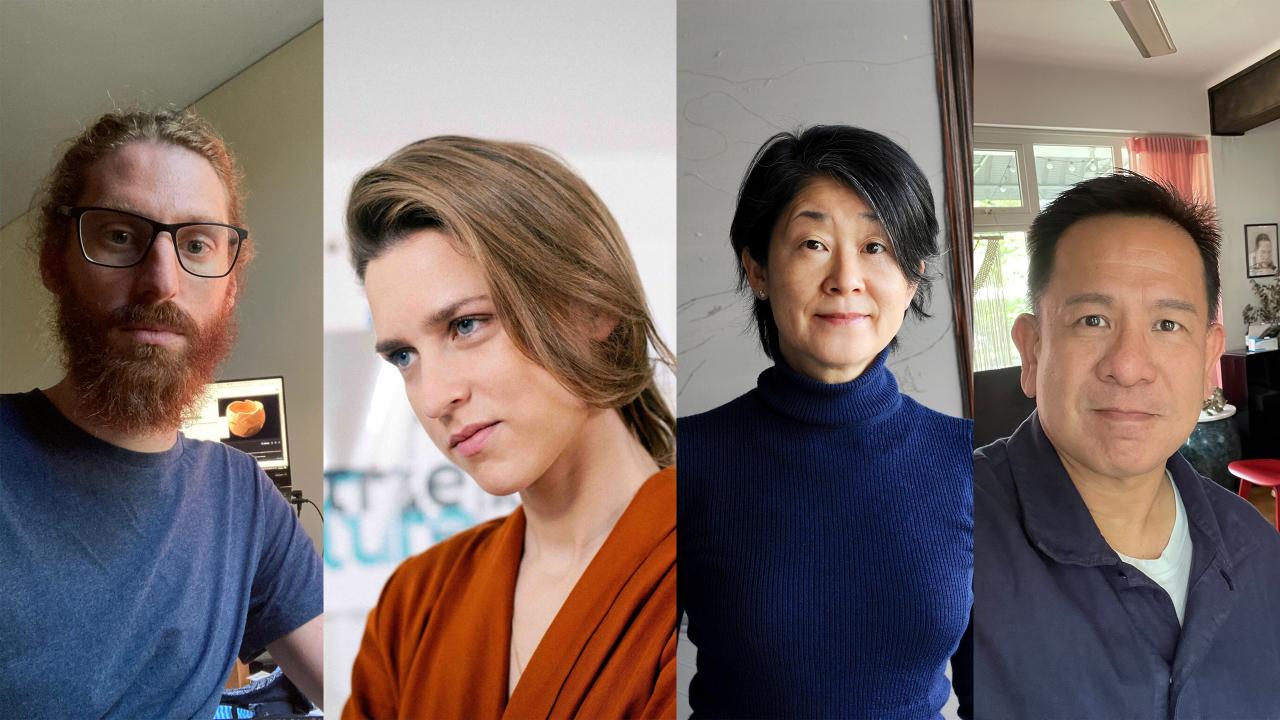
The Discovered mentors share their experience of the journey so far
‘Touch, reflection and strength. How do our objects help to combat isolation in a pandemic world? How can we foster a sense of touch in an increasingly virtual world.’ Oh and how do you answer that through the medium of four different timbers – hard and soft maple, red oak and cherry – from the American hardwood forests? These were the questions the American Hardwood Export Council (or AHEC) and Wallpaper* magazine posed to 20 up-and-coming designers from around the globe in their latest project, Discovered.
To provide advice (and possibly a virtual shoulder to cry on), the young creatives were aided and abetted by four mentors who have spent the past decade or more successfully navigating the eddies of the international design scene: Tomoko Azumi, Maria Jeglinska-Adamczewska, Adam Markowitz and Nathan Yong.
‘The project came at a time when people were processing this extraordinary situation in their own minds,’ says Markowitz. ‘Initially it was a bit of escapism for these designers who were kind of stuck in their houses. But as time went on it became a way for them to process the situation. It has been a moment to pause, to slow down and consider.’ The COVID-19 outbreak has also given the mentors time to think about their own practice. ‘I realised through the pandemic that my role in the design industry is really connecting users and manufacturers,’ says Azumi, who was keeping an eye on designers hailing from the UK, Europe and South Africa. ‘I need to visit factories and then I need to see people, touch things, check prototypes and discuss how to show pieces to the public. It had become so routine I hadn’t realised what my real purpose was… The pandemic has given the designers a similar time to think about where they’re standing and how they need to map themselves in the industry.’
Each of the four has a slightly different interpretation of the brief. It was about ‘belonging and identity’ for Jeglinska, whose mentees came from Europe and South America. ‘It was really personal in that sense, without being too psychological, but based around basic human needs,’ she explains. To illustrate this she uses the example of Martin Thübeck who, like many people, spent the pandemic balancing home and work life. The Swedish designer has two small children who were stuck in the flat all day and, as a result, decided to create a chair that transforms into a slide when it is turned upside down. Jeglinska is also at pains to point out quite how relevant wood is in our current situation. ‘It epitomises what we’ve been feeling during the pandemic – that lack of contact, touch, the warmth and emotional comfort the material can give us,’ she says.
Provenance was important to Singapore-based, Nathan Yong. ‘We need to explain where we come from,’ he says. ‘For the designers it was a question of how the pandemic has affected us emotionally. I did hint to my group [which contains designers from China, Thailand, Vietnam and Singapore] that they should look at their society, their architecture and their culture. Especially now you can’t fly to anywhere you want in the world, it’s best that you tell your story through design.’ Several took his advice to heart. Yunhan Wang, for instance, has created a table for a tea drinking ceremony inspired by Hakka round houses, a building style unique to southern China, while Tan Wei Xiang took his cues from the crinkled zinc walls surrounding construction sites that pock Singapore for his cabinet made from a combination of timbers.
The key, for Markowitz, was to encourage his cohort of designers from Australia, Japan and South Korea to think a little differently. ‘A lot of them came with pre-conceived ideas. One thing I attempted to do was get rid of those,’ he confesses. ‘It’s a classic thing as a designer when you’re approached with a brief: the immediate impulse is reach into your basket of past, discarded ideas and see what comes up. Then you wrap the brief around that and post-rationalise how you got there.’
While the mentors have been on hand to lend their knowledge, each is aware that the industry has changed markedly since they first emerged. Young designers have to think about more things than my generation used to,’ says Azumi. ‘I think society is asking much more about what their products are for? What’s the mission? Why do they need to exist?’ Markowitz concurs: ‘The challenge young designers face at the moment is finding out what they’re about and who they are in a very internationalised and homogenised design environment.’ All agree that social media has provided a new generation of creatives a global platform but, conversely, it’s incredibly hard for them to get their hands on materials and build relationships with manufacturers.
All of which begs the question: how important is a project liked Discovered for those selected? ‘It’s a really great chance to see their ideas turned into real objects by four brilliant manufacturers,’ says Azumi. ‘And they’ll learn a lot during the process.’ Yong believes it provides an important showcase for Asian design. ‘A lot of design publications are based in Europe and the U.S. because they have more mature markets. So it’s very rare for Asian designers to get spotted. This project puts them on an international platform.’
It will be fascinating to see the results when they’re unveiled at London’s Design Museum on 13 September.
Words by Grant Gibson
